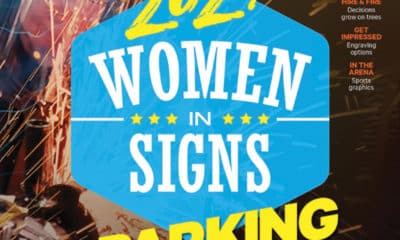Electronic message centers, or LEDs, are steadily pervading the sign industry. But are they green? And will zone regulation challenges threaten their growth?
LED expert and Signs of the Times columnist Dr. Nisa Khan will deliver an up-to-the-minute report on the marketing, technological and legislative issues surrounding LEDs when the Signage and Graphics Summit convenes in January. Here’s a preview of her session, What’s Next in Electronic Message Centers? from the SGS team.
SGS: As someone relatively new to the graphics industries, but having an extensive financial and technical background, what has been your impression of the Summit the past two years?
NK: I have attended many technical and business conferences, but SGS has been a unique meeting for me. It brings together many “hands-on” executives who share their successes and challenges and find great opportunities to partner when they find common goals. The relaxed yet business-oriented atmosphere allows everyone to enjoy being together and still gives a boost to their businesses. At the very least, I have noticed everyone took away better understanding of the industry direction toward more electronic digital signage utilization.
SGS: You’ve now become much more involved with the sign industry through your participation on International Sign Association technical committees. What do you see as major challenges specifically facing the sign industry?
Advertisement
MNK: New, important issues affecting the sign industry are energy efficiency, sustainability and utilization of advanced electronic digital technologies. Until now, the sign industry was fairly well protected from power and safety constraints; but, in the wake of energy savings, environmental safety and sustainability, efficient and clean technologies are likely to be the winners for the signage industry.
While there is a lot of information in the media supporting the energy efficiency and mercury-less (hence deemed safe) features of LEDs, the sign industry and the regulatory bodies are only beginning to address these issues and calling various industry experts for contribution. I think these efforts will lead to further penetration of LEDs in signage and reduce energy consumption. But, it will require faster collaboration among various agencies than we have seen in the past.
SGS: You’re aware that the Dept. of Energy recently completed a study on energy savings with regard to solid-state lighting. What do you see happening with LEDs in the sign industry, both in terms of electronic message centers and for illuminating channel letters, etc.?
MNK: Last month the DOE offered a study of the LED niche markets to develop further understanding of the energy savings and various other motivating factors that will help adopt LEDs as a lighting source. This study is encouraging, but it leaves out the key challenges the SSL industry needs to resolve before it can serve as the dominant technology for channel letter and cabinet sign illumination.
The biggest challenge for LED vendors is repeatability with respect to light output, color quality and longevity. The big performance differences among vendors offering LED illumination sources for signage will make many sign-makers reluctant to switch to an LED solution. Further, the environmental and safety issues of LEDs, while under investigation by only a few, may be important for us to consider.
For outdoor EMCs, LEDs are already chosen over LCDs or other technologies for most applications because of their high brightness and durability. These being commercial products, handling is limited to fewer people and therefore safety issues may be more controllable. I believe the EMC market will grow nicely with improved LED technologies.
Advertisement



 Projects1 week ago
Projects1 week ago
 News1 week ago
News1 week ago
 How To1 week ago
How To1 week ago
 Real Deal2 days ago
Real Deal2 days ago
 Editor's Note4 days ago
Editor's Note4 days ago
 News2 days ago
News2 days ago
 News1 week ago
News1 week ago
 Product Buying + Technology4 days ago
Product Buying + Technology4 days ago










